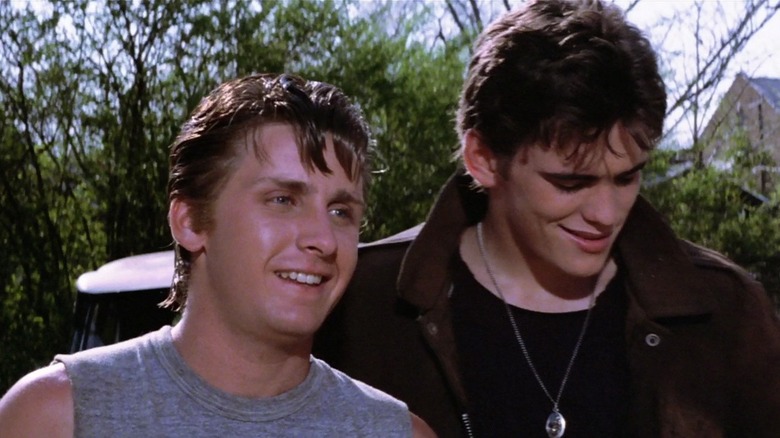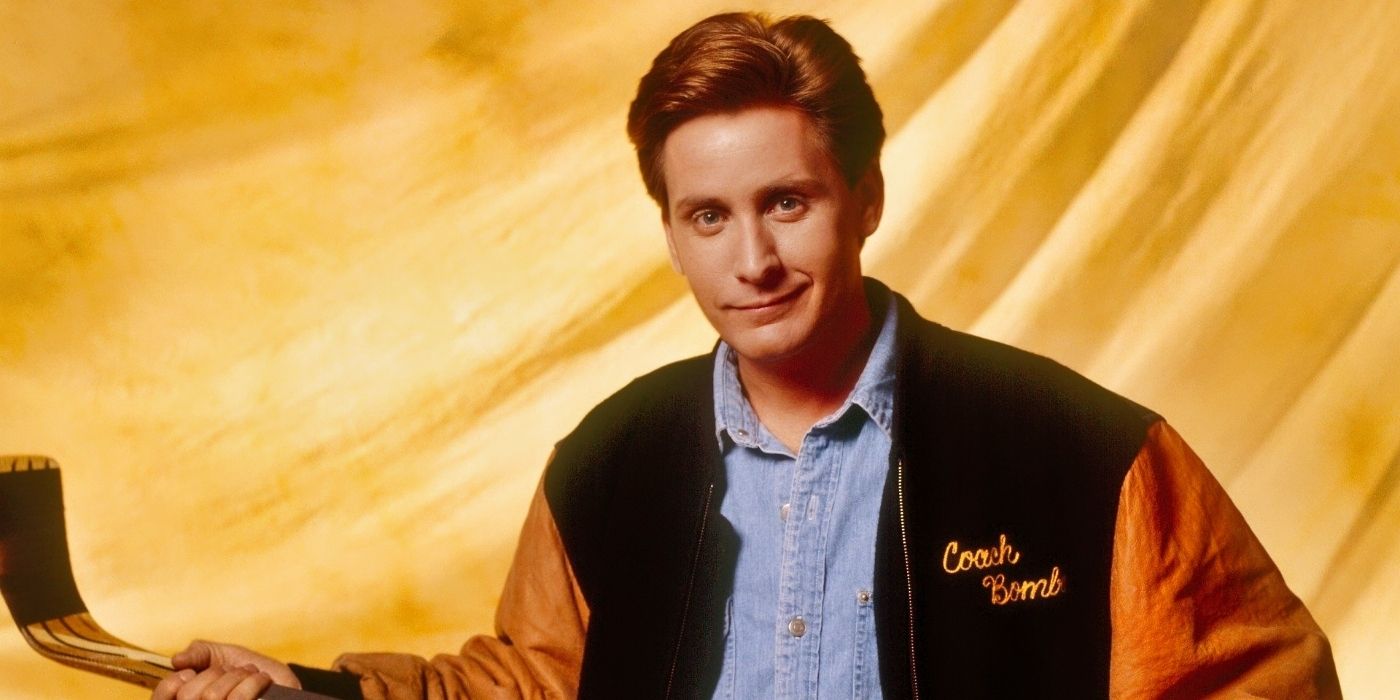
In the annals of Hollywood, few trajectories are as fascinating and, at first glance, perplexing as that of Emilio Estevez. Once a quintessential leading man, a vibrant icon of the 1980s and 90s, Estevez captivated audiences with a unique blend of rugged charm and emotional depth. He was, as the press often remarked, part of a new generation of stars, a prominent member of the notorious ‘Brat Pack’ who redefined youth culture on screen.
Yet, as the new millennium dawned, his presence in front of the camera began to wane. The familiar face that once graced posters for blockbusters and cult classics alike became increasingly rare. This wasn’t merely a slow fading into obscurity, but rather a deliberate, albeit initially unintended, retreat from the relentless machinery of mainstream cinema. The question, then, becomes not just ‘what happened?’ but ‘what led such a celebrated figure to consciously choose a different path?’
This article embarks on an investigative journey, a Vanity Fair-style deep dive into the multifaceted reasons behind Emilio Estevez’s gradual disappearance from the Hollywood spotlight. It’s a narrative woven from the threads of early ambition, industry shifts, personal evolution, and a profound desire for creative autonomy that ultimately saw an actor of his caliber reprioritize his life and career, finding fulfillment not in the clamor of celebrity, but in the quiet, purposeful act of storytelling from behind the camera.

1. **The Genesis of a Star: Early Ascent and Creative Roots**Emilio Estevez’s journey into the cinematic world began remarkably early, making his big screen debut at the tender age of 11 in Terrence Malick’s “Badlands.” This initial exposure was not an isolated event but rather a familial inheritance, as he appeared alongside his father, Ramón Estévez, better known by his screen name, Martin Sheen. The film served as an early, albeit brief, immersion into the craft that would define his early life.
At 14, Estevez found himself on another set, this time in the Philippines for Francis Ford Coppola’s epic “Apocalypse Now,” where his father played the lead. Though his scenes as an extra were ultimately cut, the experience proved to be profoundly formative. It ignited a creative spark, inspiring the young Estevez to write and star in his own play, “Echoes of an Era,” firmly establishing his identity as an actor, following in his father’s footsteps.
After high school, Estevez consciously bypassed college, opting instead to dive directly into show business. This decision marked the beginning of a prolific, decades-long career that propelled him into the very heart of the Hollywood mainstream. His early roles hinted at a burgeoning talent, laying the groundwork for the significant impact he would soon have on the industry.

2. **The Brat Pack Era: Defining a Generation**Just two years post-graduation, Estevez secured the pivotal role of Johnny in Tim Hunter’s “Tex,” an adaptation of S.E. Hinton’s novel. This film, distributed by Walt Disney Productions, was notable not only for Estevez’s performance but also for its cast, which included Matt Dillon, Meg Tilly, and Jim Metzler. His association with Dillon and Hinton proved instrumental in landing his next iconic role.
In 1983, Estevez joined the ensemble of Francis Ford Coppola’s seminal drama, “The Outsiders,” portraying Two-Bit. This film, featuring an astonishing array of future stars like C. Thomas Howell, Ralph Macchio, Patrick Swayze, Rob Lowe, and Tom Cruise, became a veritable launching pad for a new generation of actors. Its cultural weight, decades later, remains immense.
“The Outsiders” is often regarded as the inaugural film of the ‘Brat Pack,’ a term that would soon define a cohort of young, rising stars. Estevez quickly cemented his status within this group, continuing to work diligently. His lead role in Alex Cox’s 1984 punk epic “Repo Man” further showcased his versatility, delivering a fierce, caustic performance that resonated deeply with critics and audiences, securing the film’s place as an ’80s classic.

3. **The Rise of a Label: Coinage of the ‘Brat Pack’ and Mainstream Success**The term ‘Brat Pack’ was officially coined in 1985 by David Blum for a New York Magazine cover story. It identified actors who appeared in Joel Schumacher’s “St. Elmo’s Fire” or John Hughes’ “The Breakfast Club.” Estevez, having starred in both, became a central figure, appearing alongside fellow ‘Brat Packers’ like Ally Sheedy and Judd Nelson.
In “St. Elmo’s Fire,” Estevez played Kirby, a law student-waiter romantically entangled with a medical intern. His role as Andrew Clark, the high school wrestler in detention for bullying in “The Breakfast Club,” further showcased his ability to portray complex youth. Estevez’s appeal stemmed from his handsome features and an ‘everyman’ quality, combined with a remarkable capacity for rage and emotional outbursts, lending him significant depth.
This period also saw Estevez expand his creative endeavors. In 1985, he not only acted in another S.E. Hinton adaptation, “That Was Then… This Is Now,” but also wrote it. The following year, he made his directorial debut with “Wisdom,” a Robin Hood-esque drama co-starring Demi Moore. This dual talent positioned him uniquely, either as a soulful indie director or a major Hollywood star, and for a time, he actively pursued the latter path.

4. **Hollywood’s Embrace: ‘Stakeout’ and ‘Young Guns’ Era**The late 1980s saw Emilio Estevez fully embrace his status as a Hollywood leading man. In 1987, he starred opposite Richard Dreyfus in John Badham’s “Stakeout,” a mainstream crime comedy that proved to be a considerable financial success, grossing over $65 million on a modest $14 million budget. This commercial triumph mirrored a vibrant personal life, often associated with his Brat Pack celebrity.
Estevez’s high-profile relationships, including an engagement to Demi Moore and subsequent dating of Mimi Rogers and model Carey Salley (with whom he had two children), became public fodder, though the context describes his paternity dispute as a relatively minor scandal. This era was characterized by a heightened visibility both on and off screen, typical of a rising star.
1988 brought the release of “Young Guns,” a pop Western that became famous for its action sequences and attractive young cast, which included Lou Diamond Phillips, Kiefer Sutherland, Dermot Mulroney, and his brother Charlie Sheen. Estevez’s portrayal of Billy the Kid, the leader of the Regulators, was central to the film’s success. Made for just over $11 million, it earned $56 million at the box office, solidifying its status as a legitimate hit. His friendship with Jon Bon Jovi, formed during this period, led to their collaboration on the equally successful 1990 sequel, “Young Guns II,” further cementing his appeal, particularly with a younger, female demographic.

5. **The ‘Mighty Ducks’ Phenomenon and the Faltering Mainstream Path**The early 1990s marked a significant turn in Estevez’s career trajectory, largely defined by his role as Gordon Bombay in Disney’s “The Mighty Ducks.” Signed on in 1992 for this kid-friendly sports movie, Estevez played an arrogant attorney who, due to a DUI conviction, reluctantly coaches a struggling youth hockey team. Despite its clichéd narrative and mixed reviews, the film was a notable box office success, earning $50 million on a $14 million budget.
“The Mighty Ducks” resonated with a very young audience, spawning two direct sequels, “D2: The Mighty Ducks” (1994) and “D3: The Mighty Ducks” (1996), along with an unrelated animated series. While commercially successful, this franchise also subtly signaled a downturn in Estevez’s mainstream Hollywood presence. He was no longer the ‘wild child’ of the Brat Pack, but an adult actor seeking roles in an increasingly competitive industry.
His appearances in the “Ducks” sequels, along with films like the lambasted slapstick comedy “Loaded Weapon 1” and the less-popular sequel “Another Stakeout,” suggested a shift away from the more dramatic or edgy roles that had defined his earlier career. This period represented a transition, where his commercial viability was still present, but his artistic profile began to diminish in the eyes of the mainstream industry.

6. **A Dire Deal and the Heartbreak of ‘The War at Home’**1996 proved to be a pivotal, and painfully disheartening, year for Estevez’s career. He made a concerted effort to return to directing with “The War at Home,” a project in which he also starred opposite his father, Martin Sheen. Despite a talented supporting cast that included Kathy Bates, Carla Gugino, and Kimberly Williams, the film languished, making a mere $44,000 at the box office. This commercial failure underscored a growing distance from the mainstream.
However, the story behind “The War at Home” reveals a deeper betrayal. Estevez painfully recounted in a 2006 interview with The Guardian, a deal he had struck with Disney: he agreed to appear in the 1996 sequel “The Mighty Ducks 3” for “no money,” under the condition that the studio would finance and distribute his passion project. Disney, however, released “The War at Home” in a mere four theaters.
This experience, as Estevez openly admitted, was a profound blow. “The heartbreak of that almost forced me out of the business,” he stated. It wasn’t a lack of desire to work, but rather a profound disillusionment with the industry’s practices. This event marked a significant turning point, confirming his departure from the Hollywood mainstream at the age of 34; the ‘Brat’ could no longer remain one.




